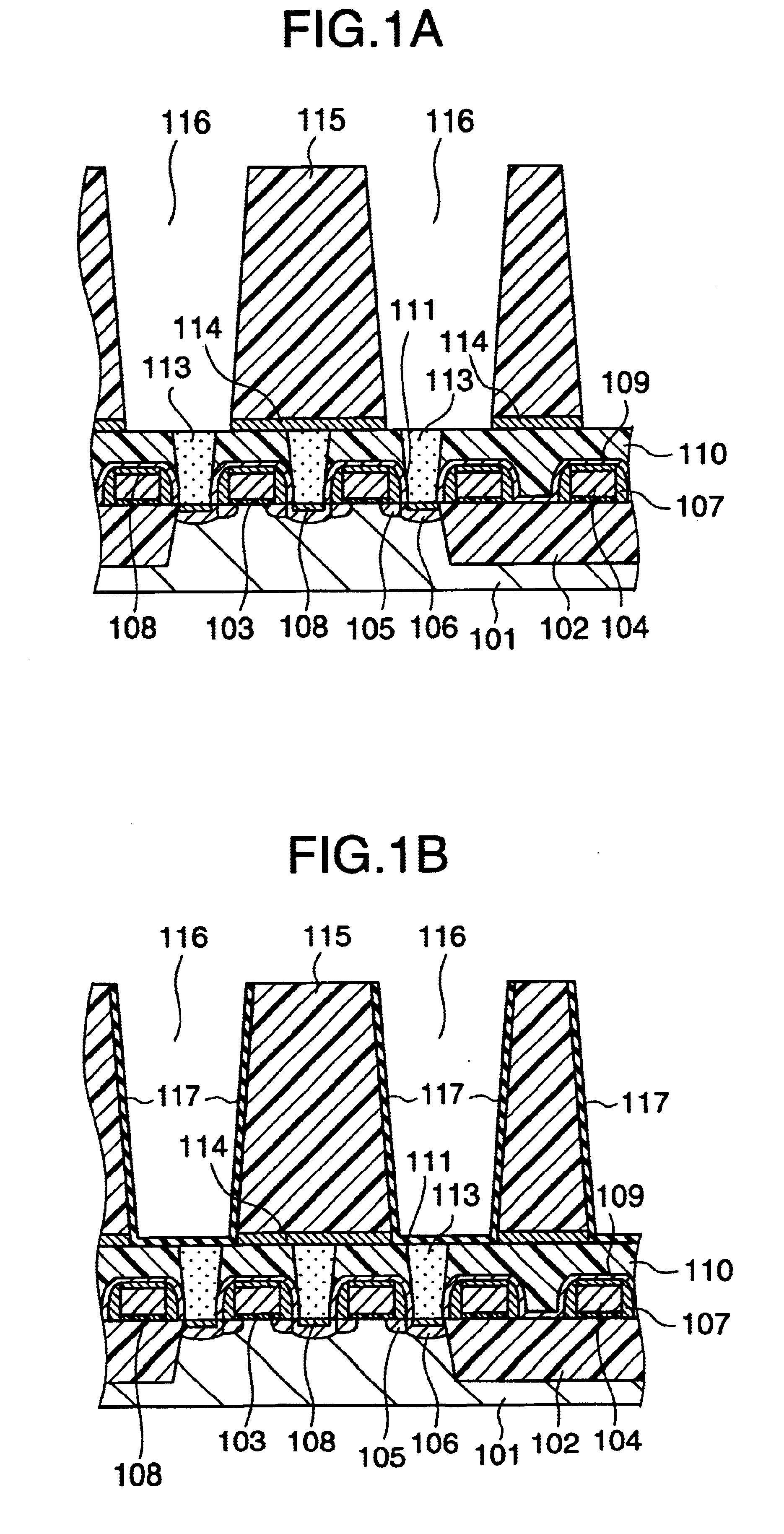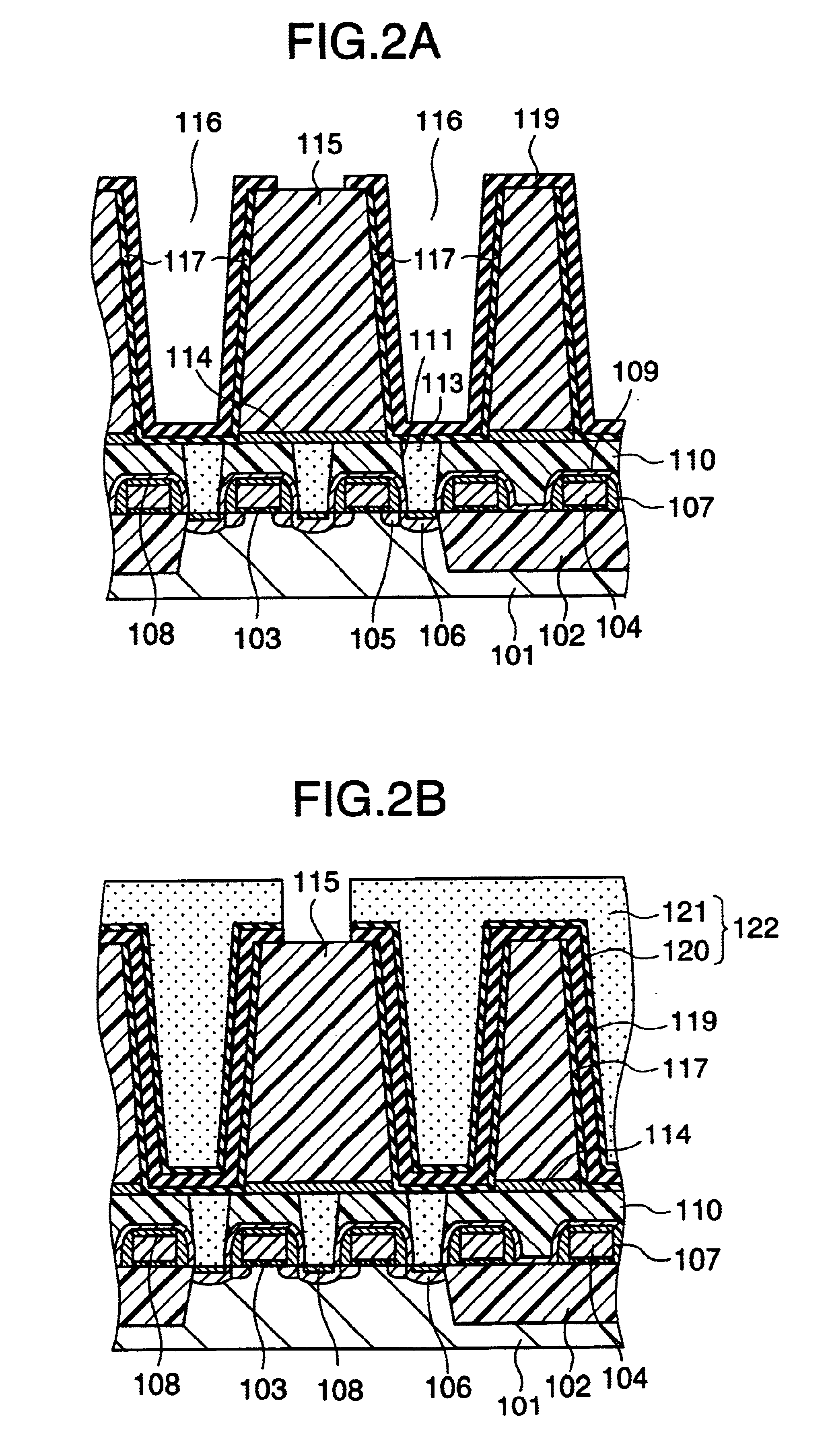Method for forming capacitor
a capacitor and dielectric technology, applied in the field of capacitor formation, can solve the problems of providing a method for forming a capacitor with a high capacitance, and the use of capacitor dielectrics, and achieve the effect of large capacitance valu
- Summary
- Abstract
- Description
- Claims
- Application Information
AI Technical Summary
Benefits of technology
Problems solved by technology
Method used
Image
Examples
second embodiment
[0041]FIGS. 11A, 11B are cross sectional views of a capacitor formed using the method according to the invention in the order of manufacturing steps;
[0042]FIGS. 12A, 12B are cross sectional views illustrating the steps subsequent to the step of FIG. 11B;
third embodiment
[0043]FIGS. 13A, 13B are cross sectional views of a capacitor formed using the method according to the invention in the order of manufacturing steps;
[0044]FIGS. 14A-C are illustrations of how the capacitors formed using the methods, related to formation of capacitor, according to the first through third embodiments allow leakage current to flow therethrough; and
[0045]FIG. 15 illustrates how capacitance per unit area varies depending on the capacitor formation methods employed in the first and second conventional examples and the first through third embodiments.
DETAILED DESCRIPTION OF THE PREFERRED EMBODIMENTS
first embodiment
[0046]A method for forming a capacitor according to the invention will be explained with reference to FIGS. 5 through 10 illustrating cross sectional views of associated manufacturing steps.
[0047]First, in accordance with a process known to those skilled in the art, gate oxide films 3 and gate electrodes 4 are formed on a region that is separated from other regions by a field isolation film 2 in a silicon substrate 1 (FIG. 5A).
[0048]Subsequently, LDD regions 5 and diffusion layers 6 are formed in regions of the silicon substrate 1 on both sides of the gate electrode 4 to create a MOSFET. Furthermore, cobalt salicide layers 8 are formed in surface portions of the gate electrodes 4 and the diffusion layers 6 using typical Self Aligned Silicide (Salicide) techniques (FIG. 5C). The above-stated cobalt salicide layers are formed according to the following process steps.
[0049]An insulating film 7 made of, for example, SiO.sub.2 is deposited using CVD techniques, etc. to cover upper surfac...
PUM
 Login to View More
Login to View More Abstract
Description
Claims
Application Information
 Login to View More
Login to View More - R&D
- Intellectual Property
- Life Sciences
- Materials
- Tech Scout
- Unparalleled Data Quality
- Higher Quality Content
- 60% Fewer Hallucinations
Browse by: Latest US Patents, China's latest patents, Technical Efficacy Thesaurus, Application Domain, Technology Topic, Popular Technical Reports.
© 2025 PatSnap. All rights reserved.Legal|Privacy policy|Modern Slavery Act Transparency Statement|Sitemap|About US| Contact US: help@patsnap.com



